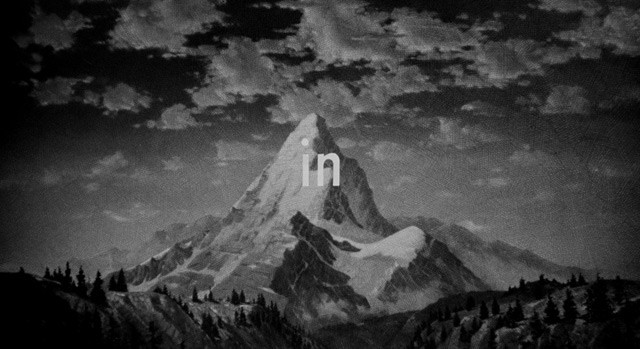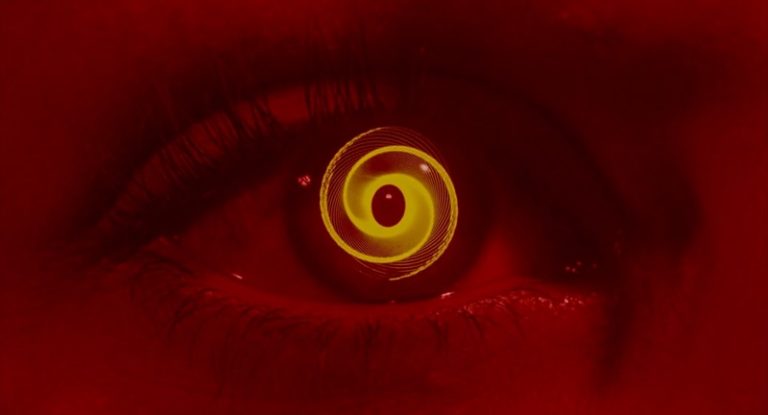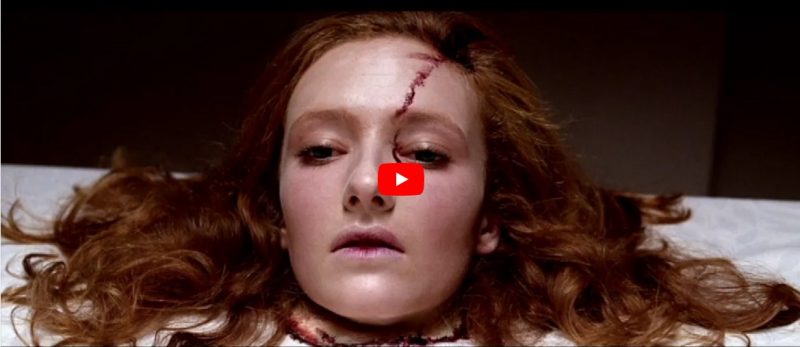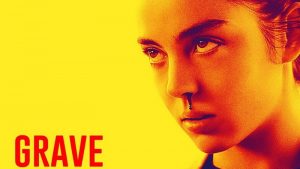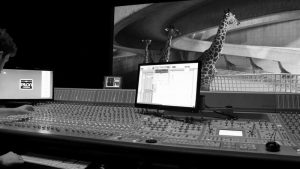/ A very special treatment
On the Credits’ family there are deux distinct genres :
– The Opening Credits often short & related to the narration
– The End Credits which are much longer because of their content and generally “disconnected” to the story.
If the first named is most of the time the attention of careful work by renowned “Title Designers” with the ambition to create a full-fledged piece within the project, the second is commonly shortened, abridged, cut whether in cinema, television or streaming services. It nevertheless remains attached to history and could deserve a better fate …
You will find here a short Focus on some examples of Credits’ treatments, as well as a more general thinking on its role in order to open up on the need of this moment for the public.
Opening Credits
The film credits are the subtle art of mixing image, typography and music. It is a little-known part of the history of Cinema, graphics and our collective memory (…)
Even if we can distinguish treatments’ specificity between series and films, it is nevertheless quite current to note a singular aesthetic and narrative ambition, which we can find both on image and music.
The examples below (among many other references) can demonstrate this point of view.
From vertigo to the impossible
Let’s start with the outstanding opening credit from Alfred Hitchcock’s film “Vertigo” :
Graphic designer Saul Bass is a pioneer in the field of credits, drawing inspiration from the history of the film to create a specific atmosphere. He succeeds in instilling this sensation of vertigo, of falling, of loss of control : the visual ensemble is impressive.To this exceptionnal graphical success, it is relevant to notice all the Bernard Herrmann‘s genius in this cloudy, deviant, ambivalent, sensory score, a very apart proposal from the canons of the time in film music.
On series‘ side we also have some great examples like Mission : impossible (Bruce Geller) :
This is a story of a “lit fuse that runs through all the images of the protagonists in action.” (Laurent Valero)In addition to the striking visual aspect, we are caught by Lalo Schiffrin’s heady Quintuple meter1 : a writing at the crossroads of Latin music and Jazz, a both simple and complex theme, which indelibly marks the viewer& listener.
And more recently...
Even if the Cinema still uses the illustrated opening credits (with several examples like Seven or Catch me if you can), this is particulary at the level of the series that the stakes drove creation towards true works of art within the audiovisual work itself.
First example to demonstrate this artistic wish : The Leftovers (Damon Lindelof & Tom Perrotta). The Opening credit is coming from Garson Yu, prolific Title Designer from the yU + co Agency.
For this dramatic series, the fresco represented in the credits evokes the Renaissance period, biblical themes (last judgment, separation between the banished and the chosen, etc.). The visual zoom shows bodies caught in a well of light.
Max Richter’s music perfectly illustrates this dramatic tension through the use of an harmonic Ostinato2 and a progressive densification of the orchestration. Like a feeling of vertigo, it evokes the inexorable and the need for men to accept their fall.
Another relevant example : The Crown whose credits has been given to Patrick Clair, one of the most famous Title Designer :
Hans Zimmer is in charge of the music for this credits, without however taking care of anything else in the series which will be entrusted to other Composers (Ruppert Gregson-Williams, Lorne Balfe and Martin Philipps).
This is tipical of certain series with titanic ambition (and unlimited means) : to attract a big name in music (or film music) industry for the credits, despite all the relevance that the Composer of the series could contribute by his experience of the narrative.
There is also in some cases the desire to use an existing track – a very common use in the field of advertising. The musical work was not designed for the project, but it can have a kind of resonance with the story, the theme, the characters – example with the Title “Far From Any Road” performed by The Handsome Family used in True Detective.
Even if it is without any doubt a great opportunity of visibility for the track, the advantage of using an existing song to illutrate a story is a real question. Its impact is the subject of studies like this one – for which I will talk soon.
As we can see following these examples Opening credit is a strategic moment of the film for which special care is taken. It is quite different with the end credits.
The End Credits or the neglected child
This is the moment when the lights turn on in theaters, inviting spectators to leave the premises.
This is the moment when the audience applauds in festivals to congratulate the whole film.
This is also the time that TV Channels cut back, often interrupting the last seconds or minutes to make place for the new program.
It is finally the moment shortened by the streaming platforms (Netflix, Amazon, etc.) in order to send the viewer in a few seconds to the new “content” – the next episode, the next movie suggestion. In just a few seconds, the screen shrinks and slides to the side to make room for the next program proudly displaying a new plot, new colors, new music, etc.
Final stage of a film, the credits are really considered apart for the viewer and the broadcasters.
Nevertheless…
The end justifies the means
A needful moment of informations
We can’t ignore the obvious utility of the End Credits : pay tribute to all those who have worked or contributed to the artistic project. There is this informative dimension that concludes the story.
An extension of the film's sensory experience
Beyond this primary function, it can be perceived as a story’s extension : it can be its conclusion, its opening to a new narrative, its suspension, etc.
Music is the ideal vector for that : it makes it possible to extend the movie’s sensory experience, keeping the spectator in the attention of the story. It brings elements of thinking, understanding, even deepening.
This moment in the credits is conducive to the music’s development : it can take a different place and tell the invisible. It’s a real tailor-made role that brings to the audiovisual experience.
One example among many others, which I will take from my repertory : the music for the film Ogre directed by Jean-Charles Paugam. I leave the last 4 minutes of the film below, including the end credits.
We can, through this example, understand the interest of going to the end of the credits : while the end music reveals the true identity of the character (between 10’46 and 12’10), the story of a man who becomes an Ogre, the music in the credits takes up the main theme and brings it even further, to the affirmation of this new identity, macabre, relentless and exuberant!
While the various speakers who worked on the project scroll on a black background, the music keeps us in the film’s universe and the sensory experience carries on.
As Composer Daniel Pemberton aptly points out,
It is also a progressive progression of the music which often ends in the credits, a carefully prepared work whose sensory outcome is presented here. The almost automatic deprivation of this space often thought of by the Director and the Composer has an impact on the experience of the film.
There is indeed a thread in the musical narration which often finds its climax during the end credits. Because the time is longer, because it is less constrained by a precise temporality, a music’s development may be possible. It is a sensory culmination for the viewer.
An essential moment of contemplation
Daniel Pemberton defines this particular time as “a moment of essential contemplation” in an article of the Guardian.
Faced with an unbridled consumption of audiovisual content offered by Streaming services, the best answer is indeed to have a SAS, a moment of integration, even of “digestion”. Daniel Pemberton even allows himself to use the gastronomic metaphor :
The second that final spoonful goes in your mouth the waiter runs over, noisily clears the plates away and shoves a new menu under your nose, while insisting that you order the set menu immediately.
The case of streaming services
Where in the past works of art could resonate in us years after viewing them, we quickly switch from one program to another, we swallow “content” that is served to us in extreme abundance.
I do have a problem with having to “opt-in” to watch something that is often an integral piece of a complete artistic vision.
Indeed, today the default configuration of Streaming services is to shorten the credits after a few seconds. The solution would be to allow everyone to set their desire to see – or not to see – the credits in their entirety, to live – or not to live – the film’s experience as a whole.
Towards a new end credits experience ?
If the end credits are difficult to access, there are nevertheless promising initiatives that are favorable to this experience :
– Illustrated credits and / or the insertion of post-credits scenes as is often the case in Marvel productions.
– Starting the credits in the narrative continuity, like what we find in “Midnight on the Universe” by Georges Clooney or “Pieces of a woman” by Kornél Mundruczó. The viewer is thus kept in the attention of the images, while enjoying the information in the credits and feeling the music proposal. It’s a moment when the plot elements disappear to give way to a kind of “live” immersion with the characters, without ellipse.
We can be delighted with these new experiments which bring to the fore this essential sensory and informative sequence of the film.
“Otherwise that potentially powerful moment of emotional contemplation and reflection may soon be lost for ever thanks to a cabal of companies whose only interest is to maximise time in your eyeballs and not in your hearts.” Daniel Pemberton
So then are we watching the film till the end ?
1 Quintuple meter : Quintuple meter or quintuple time is a musical meter characterized by five beats in a measure.
2 Ostinato : is a musical composition process that consists of obstinately repeating a rythmical, melodical, harmonical formula which can leadin an unchanging way the various thematic elements during an entire piece.
/ Informations
Additonnal Ressources :
